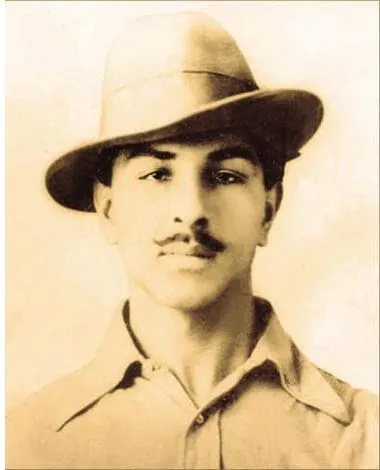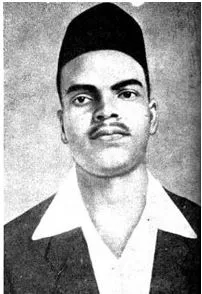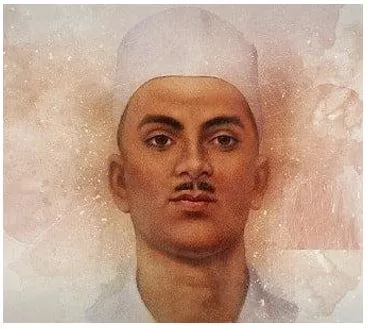

31st March 2025 (31 Topics)
Context
India celebrates Shaheed Diwas, or Martyrs' Day on January 30 to honor different freedom fighters, March 23 holds special significance. On this day in 1931, three young revolutionaries—Bhagat Singh, Shivaram Rajguru, and Sukhdev Thapar—were executed by the British.
Why is March 23 Observed as Shaheed Diwas?
- March 23 marks the execution of Bhagat Singh, Rajguru, and Sukhdev in Lahore Central Jail. These three revolutionaries were part of the Hindustan Socialist Republican Association (HSRA), a group committed to overthrowing British rule through revolutionary activities.
- Their most notable action was the Lahore Conspiracy Case, in which they were accused of assassinating British police officer John Saunders in 1928.
- This act was in retaliation for the brutal lathi charge on Lala Lajpat Rai, a respected leader of the freedom movement, who succumbed to his injuries.
- Bhagat Singh – The Revolutionary Thinker
- Bhagat Singh was born on September 28, 1907 in the village of Banga in Lyallpurdistrict (present-day Faisalabad, Pakistan).
- He was an influential Indian revolutionary, great patriot, socialist revolutionary and freedom fighter known for his activism against British colonial rule.
- He supported Mahatma Gandhi in the Non-Cooperation Movement and was affected by the Jallianwala Bagh massacre (1919)and the violence against unarmed Akali protestors at Nankana Sahib (1921).
- He founded the Naujawan Bharat Sabhain the year 1926 to encourage the peasants and workers to fight against British rule. He was the secretary of that organisation.
- Singh joined the Kirti Kisan Partyin 1926 in Lahore. He started writing for ‘Kirti’ and wrote against the atrocities of the British.
- In 1928, the Hindustan Socialist Association (HSRA)was also established by him, along with Sukhdev, Chandrasekhar Azad and others.
- The main events which changed the course of the life of Bhagat Singh leading to his early martyrdom at the age of 23 were the –
- the Rowlatt Act
- the Jallianwala Bagh massacre
- the Non-Cooperation Movement
- the event at Chauri-Chaura
- the Kakori Train Conspiracy
- the Central Assembly bombing at Delhi

- Shivaram Rajguru – The Fearless Warrior
- Shivaram Hari Rajguru was born on August 24, 1908, in Khed, Maharashtra (now known as Rajgurunagar).
- Involvement in the Freedom Struggle: As he grew older, Rajguru became actively involved in the fight for independence. He first joined the Seva Dal, where he attended training camps at Ghatprab Later, he became a part of the Hindustan Socialist Republican Association (HSRA), an organization formed in 1928 by revolutionaries like Chandrasekhar Azad and Bhagat Singh.
- Rajguru was known for his sharp shooting skills, earning him the title of "Gunman of HSRA." His dedication to the cause made him an integral part of the revolutionary activities undertaken by the group.
- The Lahore Conspiracy Case: In 1928, Rajguru, along with Bhagat Singh and Sukhdev, was involved in the assassination of John Saunders, a British police officer. The act was meant to avenge the death of Lala Lajpat Rai, who had succumbed to injuries after a brutal police lathi charge during a peaceful protest.

- Sukhdev Thapar – The Strategic Mastermind
- Born on May 15, 1907, in Ludhiana, Punjab.
- He was a key member of the Hindustan Socialist Republican Association (HSRA), organizing revolutionary cells in Punjab and Northern India.
- He co-founded Naujawan Bharat Sabha (1926) to mobilize youth for India’s freedom struggle.
- He was involved in the Lahore Conspiracy Case (1928), where he, Bhagat Singh, and Rajguru avenged Lala Lajpat Rai’s death by mistakenly killing P. Saunders instead of James A. Scott.
- He participated in the 1929 Prison Hunger Strike against harsh treatment of prisoners.
- He was arrested and sentenced to death; hanged on March 23, 1931, in Lahore Central Jail at just 24 years old.

Fact Box:Important Events Rowlatt Act
Jallianwala Bagh Massacre
Non-Cooperation Movement
Chauri-Chaura
Kakori Train Conspiracy
Central Assembly Bombing at Delhi
|
More Articles

